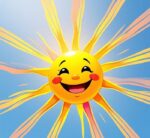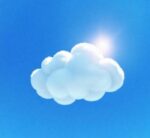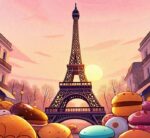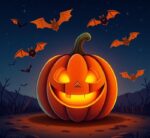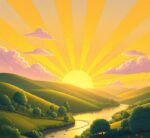- You are here:
- Home »
- words
- » Kindergarten Words That Start With S [LIST]
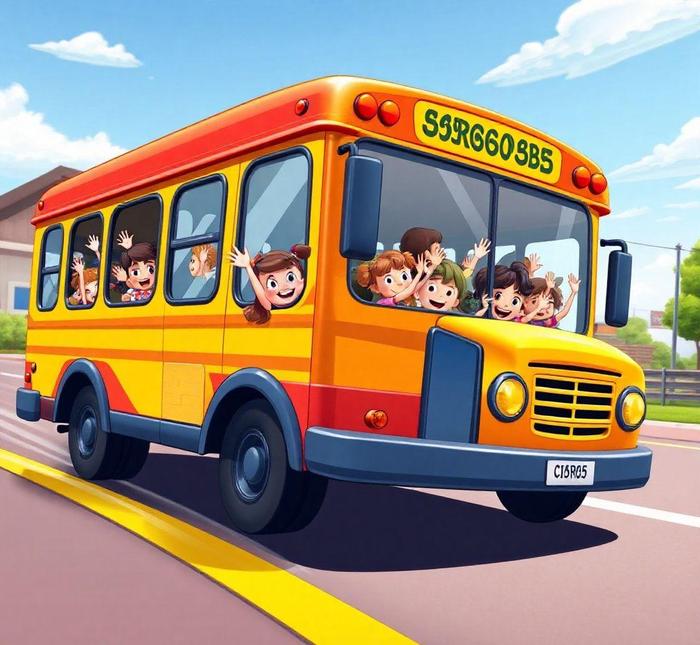
Kindergarten Words That Start With S [LIST]
When it comes to early childhood education, vocabulary building is a key aspect of a child’s development. For young learners, familiarizing themselves with simple words that start with specific letters helps to strengthen their language skills. The letter ‘S’ is one of the most frequently used letters in the English language, making it an important starting point for young students to learn new words. In this article, we’ll explore a curated list of kindergarten words that start with ‘S’ to help children expand their vocabulary while making learning fun and engaging. These words, ranging from common nouns to action verbs, are perfect for young children to practice pronunciation, spelling, and usage in sentences.
By introducing kindergarten words that start with ‘S’, educators and parents can help children connect sounds with letters, build phonemic awareness, and develop their reading and writing skills. The selection of words included in this list is not only easy for children to grasp but also relevant to their daily experiences, making them more likely to use these words in conversations. Whether it’s words related to animals, objects, or simple actions, the goal is to provide a solid foundation that will benefit children as they progress in their literacy journey.
Kindergarten Words That Start With S
1. sun
The sun is a large, bright ball of gas that provides light and warmth to our planet. It is essential for life on Earth, helping plants grow and giving us energy.
Examples
- The sun is shining brightly in the sky.
- We use sunscreen to protect our skin from the sun.
- In the morning, the sun rises in the east.
2. sock
Socks are pieces of clothing worn on the feet. They can be made from cotton, wool, or other materials to keep your feet comfortable and warm.
Examples
- I wear a pair of socks to keep my feet warm.
- These socks are blue with white stripes.
- My sock has a hole in it, and I need to fix it.
3. star
A star is a ball of hot gas that produces light and heat. Stars are seen in the night sky and can be different sizes and colors.
Examples
- Stars twinkle in the night sky.
- We can see many stars when it’s clear and dark outside.
- The biggest star in our sky is the sun.
4. snake
A snake is a long, legless reptile. Snakes can be found in many environments and may be harmless or dangerous, depending on the species.
Examples
- The snake slithered through the grass.
- Some snakes are poisonous, so it’s important to be careful.
- I saw a snake at the zoo today.
5. ship
A ship is a large boat used for traveling on water. Ships can carry people, animals, and goods across seas and oceans.
Examples
- The ship sails across the ocean.
- We saw a big ship at the harbor.
- Ships can carry many goods from one place to another.
6. sand
Sand is made up of tiny pieces of rock and minerals. It is often found on beaches, deserts, and riverbeds and can be used to make glass or other materials.
Examples
- The beach is covered with soft, warm sand.
- We made a sandcastle at the beach.
- The sand is cool when the wind blows over it.
7. school
A school is a place where children go to learn. Teachers help students study subjects such as reading, math, science, and art.
Examples
- I go to school every weekday.
- In school, we learn new things like reading and math.
- Our school has a big playground for recess.
8. squirrel
A squirrel is a small rodent with fluffy tails that lives in trees or on the ground. They are known for collecting nuts and storing them for later.
Examples
- A squirrel is running up the tree.
- Squirrels like to eat nuts and seeds.
- We saw a squirrel gather food for the winter.
9. shoes
Shoes are worn on the feet to protect them and provide comfort while walking. There are different types of shoes for various activities like running or formal events.
Examples
- I put on my new shoes to go outside.
- My shoes are blue and very comfortable.
- Don’t forget to tie your shoes so you don’t trip!
10. sweet
Sweet describes something that tastes sugary or pleasant. It is often used to describe foods like candy, fruit, or desserts.
Examples
- This cake tastes so sweet!
- I love the sweet smell of flowers in the garden.
- The fruit is sweet and juicy.
11. starfish
A starfish is a sea animal that usually has five arms and lives on the ocean floor. It can regenerate its arms if they are lost.
Examples
- The starfish has five arms.
- We saw a starfish at the aquarium.
- Starfish live in the ocean and move slowly along the sea floor.
12. snow
Snow is frozen water that falls from the sky as soft, white flakes. It occurs in cold weather and can cover the ground, making everything look white and fluffy.
Examples
- Snow falls gently from the sky during winter.
- We built a snowman when it snowed last week.
- Snowflakes are small, delicate crystals that form in the cold.
13. strawberry
A strawberry is a small, red fruit that is sweet and juicy. It grows on a plant and is often eaten fresh or used in desserts.
Examples
- I love eating strawberries in the summer.
- The strawberry plant has bright red fruit.
- We picked fresh strawberries from the garden.
14. spoon
A spoon is a utensil used for eating or serving food. It has a round or oval bowl at the end of a handle.
Examples
- I used a spoon to eat my soup.
- My favorite spoon is the shiny silver one.
- Spoons are used for stirring or scooping food.
15. snowman
A snowman is a figure made out of snow. People typically build snowmen by rolling large snowballs and stacking them to form a body, then adding features like a nose and eyes.
Examples
- We made a snowman in the front yard.
- The snowman had a carrot nose and a scarf.
- A snowman is made by rolling large balls of snow and stacking them.
16. silk
Silk is a soft, shiny fabric made from the threads produced by silkworms. It is often used to make clothing and accessories because of its smooth texture.
Examples
- The dress was made of soft, shiny silk.
- Silk is a fabric produced by silkworms.
- She wore a silk scarf around her neck.
17. scissors
Scissors are a tool used for cutting materials like paper, fabric, or hair. They have two blades that open and close to make cuts.
Examples
- I use scissors to cut paper for my craft project.
- Please be careful when using sharp scissors.
- The scissors are kept in a drawer to stay safe.
18. sheep
A sheep is a domesticated animal that is usually raised for its wool, meat, or milk. They are often found on farms and are known for their soft, fluffy wool.
Examples
- The sheep are grazing in the field.
- We saw some fluffy white sheep on the farm.
- Sheep give us wool, which is used to make clothes.
19. sandwich
A sandwich is a meal made by placing fillings like meat, cheese, or vegetables between two slices of bread.
Examples
- I packed a ham and cheese sandwich for lunch.
- The sandwich was cut into small pieces so I could share it.
- A sandwich can be made with bread, meat, and other fillings.
20. snowflake
A snowflake is a small, ice crystal that falls from the sky during snowstorms. Each snowflake is unique and has a beautiful, intricate design.
Examples
- Each snowflake is unique and has a different shape.
- Snowflakes are beautiful and fall gently from the sky.
- We tried to catch snowflakes on our tongues during the snowstorm.
21. spider
A spider is an arachnid with eight legs. Many spiders spin webs to catch insects for food.
Examples
- The spider spun a web in the corner of the room.
- I saw a large spider in the garden.
- Spiders have eight legs and are good at catching bugs.
22. skirt
A skirt is a piece of clothing worn around the waist and covers part of the legs. It can be made from various fabrics and worn for both casual and formal occasions.
Examples
- She wore a pretty skirt to the party.
- The skirt is made of soft cotton and has flowers on it.
- I like to twirl around in my new skirt.
23. sunshine
Sunshine refers to the light and warmth that comes from the sun. It makes the day brighter and is essential for life on Earth.
Examples
- The sunshine makes me feel happy and warm.
- We went outside to play in the sunshine.
- Sunshine is important for plants to grow.
24. straw
A straw is a thin tube used to drink liquids. It can be made of plastic, paper, or metal and is often used for beverages like soda or milkshakes.
Examples
- I used a straw to drink my lemonade.
- The straw is made from plastic and is very bendy.
- Farmers use straw for bedding for animals.
25. sail
A sail is a large piece of fabric used on a boat to catch the wind and help it move across water. Sails come in many shapes and sizes.
Examples
- The boat has a large sail to catch the wind.
- We watched the sail move as the wind blew.
- He learned how to sail on a small boat during the summer.
26. soap
Soap is a substance used to clean the body, dishes, or clothes. It helps remove dirt and germs when mixed with water.
Examples
- I wash my hands with soap and water.
- Soap helps clean dirt and germs off our skin.
- We use soap to take a bath and feel fresh.
27. skate
Skating is the activity of moving over a surface, usually ice or smooth pavement, using special shoes with wheels or blades called skates.
Examples
- I love to skate at the ice rink in the winter.
- He put on his roller skates and zoomed around the park.
- We practiced skating to get better at balancing.
28. snowball
A snowball is a ball of snow that is compacted together and can be thrown or rolled. People often use them in wintertime play.
Examples
- We had a snowball fight during recess.
- She packed the snow into a snowball and threw it.
- A snowball is made by rolling snow into a ball.
29. sing
Singing is the act of producing musical sounds with the voice. People sing for fun, to express emotions, or as part of a performance.
Examples
- I like to sing songs in the car with my family.
- She sings beautifully in the school choir.
- We will sing a song during the talent show.
30. stem
The stem is the main part of a plant that connects the roots to the leaves and flowers. It helps transport water and nutrients.
Examples
- The stem of the plant holds up the leaves and flowers.
- We need to cut the stem of the flower before putting it in water.
- A plant’s stem carries water and nutrients from the roots to the rest of the plant.
31. swing
A swing is a seat attached to ropes or chains that allows a person to move back and forth. Swings are popular at playgrounds.
Examples
- I love to swing high at the playground.
- She pushed me on the swing until I could touch the sky.
- Swinging is so much fun, especially on a windy day.
32. scarf
A scarf is a piece of cloth worn around the neck for warmth or decoration. It is especially useful during cold weather.
Examples
- She wore a warm scarf to protect herself from the cold.
- My scarf is made of wool and keeps me cozy.
- In the winter, I like to wrap my scarf around my neck.
33. shell
A shell is a hard outer covering that some animals, like snails and clams, use for protection. Shells can be found on beaches and are often collected as souvenirs.
Examples
- I found a beautiful shell on the beach.
- Sea creatures like snails and clams have shells.
- The shell is hard and protects the animal inside.
Historical Context

The significance of learning words that begin with the letter "S" at the kindergarten level is rooted not only in linguistic development but also in the historical evolution of language itself. In the English language, the letter "S" has a rich history that can be traced back to the very roots of the alphabet. The letter "S" comes from the Phoenician alphabet, where it was originally a symbol for "snake" or "serpent." Over time, this symbol was adapted by the Greeks, who called it "sigma," and it eventually made its way into Latin and then into the modern English alphabet.
Historically, the "S" sound has been used in many early Indo-European languages, and it has carried meanings related to hissing, serpentine movement, or soft, sibilant sounds. The flexibility of the "S" sound has made it an ideal candidate for a variety of uses across different parts of speech. In the context of kindergarten, "S" words are often among the first words children learn to identify because they have strong phonetic qualities and are easy to articulate. Words like “sun,” “sock,” and “sand” are simple, yet they reflect the basic building blocks of language learning, as they are frequently encountered in the natural world and children’s early experiences.
In the classroom setting, learning the "S" words is often a way of connecting children with their environment and daily experiences. It ties together sensory experiences (like seeing a “sun” or feeling “sand”) with linguistic skills, helping to reinforce the connection between spoken and written language. From a historical perspective, this approach is nothing new. Language acquisition theories, such as those proposed by Jean Piaget or Lev Vygotsky, highlight how early words — including "S" words — serve as foundational tools for cognitive and social development. These early words allow children to interact with their surroundings, label objects, and begin to form the basic structure of language in a social context.
Word Origins And Etymology
Understanding the origins of kindergarten words that begin with the letter "S" offers a fascinating journey into the linguistic history of the English language. Many of these words are derived from Old English, Latin, Greek, and even Germanic roots, each contributing its own historical and cultural significance.
-
Sun: This is one of the most basic and fundamental "S" words, and its origin can be traced back to the Old English word sunne. It is related to the Proto-Germanic sunnon, and further to the Proto-Indo-European root sóh₂wṓs, which meant “sun” or “daylight.” The word "sun" has maintained its meaning for centuries, symbolizing life, light, and energy, and remains central to many cultures’ mythologies and daily lives. This consistency in meaning makes "sun" an ideal word for young children to learn.
-
Sock: The word “sock” comes from the Old English socc, which referred to a light, low shoe or slipper, derived from the Latin soccus, meaning a soft, low-heeled shoe worn by comic actors in Roman theater. Over time, the word evolved to refer to the garment we now wear on our feet. The change in meaning from a shoe to a fabric covering illustrates how language evolves to suit the needs of speakers over time, while still maintaining a connection to its original root.
-
Sand: "Sand" traces its origins back to the Old English sand, with roots in Proto-Germanic sand and Proto-Indo-European sand-, meaning "grains of stone" or "small particles of earth." The word has remained fairly consistent in its meaning throughout the history of the language, which makes it an intuitive word for children to learn. Its simple, phonetic structure also makes it an early vocabulary word for kindergarten students.
-
Snake: The word "snake" comes from the Old English sneac, which in turn came from Proto-Germanic snak-, meaning “to crawl” or "to creep." This word is part of a broader Indo-European family of words that evoke the idea of slithering or creeping movement. The association with these words helps children understand not only the physical nature of the animal but also the sound the word makes—hissing, which mimics the sound a snake often makes.
-
Star: The word "star" originates from the Old English steorra, which is derived from Proto-Germanic stern, and further from the Proto-Indo-European root h₂stḗr, which referred to a celestial body. The symbolism of stars as guides, beacons, and symbols of light carries a profound meaning for young learners, making the word "star" something both tangible and mystical, bridging nature and imagination.
Each of these words has undergone centuries of evolution, yet they maintain a deep connection to sensory experiences, making them perfect tools for young children beginning to grasp the relationship between the world around them and the words used to describe it. Understanding the origins of these words adds a layer of depth to the learning experience, as children realize that the words they use today carry with them a history and meaning that stretches back through time.
Common Misconceptions
While the letter "S" and its associated words are foundational in early childhood education, there are several common misconceptions that can arise as children begin to encounter these words. These misconceptions often stem from phonetics, spelling, or conceptual understanding, and addressing them early on can prevent confusion later.
-
Phonetic Misunderstandings: One of the most common misconceptions involves the pronunciation of the "S" sound itself. Children may sometimes confuse the soft "S" sound with the "sh" sound (as in “ship”) or even the "Z" sound (as in “zebra”). For example, the word "sun" might be pronounced as "shun" or "zun," especially for non-native speakers or young children still refining their speech. Teaching children to distinguish between these sounds is an essential part of phonetic development.
-
Plural Forms: The letter "S" plays an essential role in forming plurals, but this can also be a source of confusion. Children may incorrectly assume that every word ending in "S" is plural, when in fact, some words may be singular, as in “bus” or “glass.” Furthermore, words like “kiss” or “dress” can be tricky because they end in “SS,” yet still take an "S" to form the plural (“kisses,” “dresses”). This requires careful attention during the early stages of grammar instruction.
-
Word Confusion: Some words that start with “S” can be easily confused with one another. For instance, "sock" and "socks," while related, can cause confusion for children who are just starting to understand the difference between singular and plural. Additionally, words like “sand” and “salt” might seem interchangeable in certain contexts (e.g., at the beach), but they represent very different concepts that need to be clearly defined to avoid misunderstandings.
-
Spelling Challenges: The spelling of “S” words can present challenges for young learners, especially when there are variations in pronunciation. Words like "sign," "science," and "scissors" may confuse children because the "S" sound is represented by different letters or combinations of letters. These words demonstrate the irregularities in English spelling, and educators often need to emphasize memorization, phonetic rules, and visual recognition to help students master these terms.
-
Semantic Confusion: The diversity of meanings for words starting with "S" can lead to conceptual misunderstandings. For instance, a child might learn the word “star” and associate it only with the celestial body in the sky, but the word "star" also has figurative meanings (like "movie star" or "rock star"). Clarifying these distinctions early on helps students avoid confusion between literal and metaphorical uses of words.
Conclusion
Kindergarten words that begin with the letter "S" are more than just simple vocabulary items — they are windows into the linguistic, cultural, and historical evolution of language. From the ancient roots of words like "sun" and "snake" to the rich phonetic qualities of words like “sock” and “sand,” each "S" word carries with it a wealth of meaning and a deep connection to the world around us.
As children embark on their language-learning journey, these words help them develop phonemic awareness, improve spelling, and understand basic grammar rules. Understanding the origins and etymology of these words enriches this experience, giving young learners not only a set of words to use but also a sense of the history and development of the language they speak.
While there are common misconceptions about these words—ranging from phonetic confusion to misunderstanding plural forms—addressing these early challenges with patience and clarity will foster a deeper understanding of language. By the time children progress beyond the kindergarten stage, the foundation laid by "S" words will be essential for their continued growth as readers, writers, and communicators. In essence, these words are not merely building blocks of speech, but the first steps toward mastering the art of storytelling, understanding, and expression.



